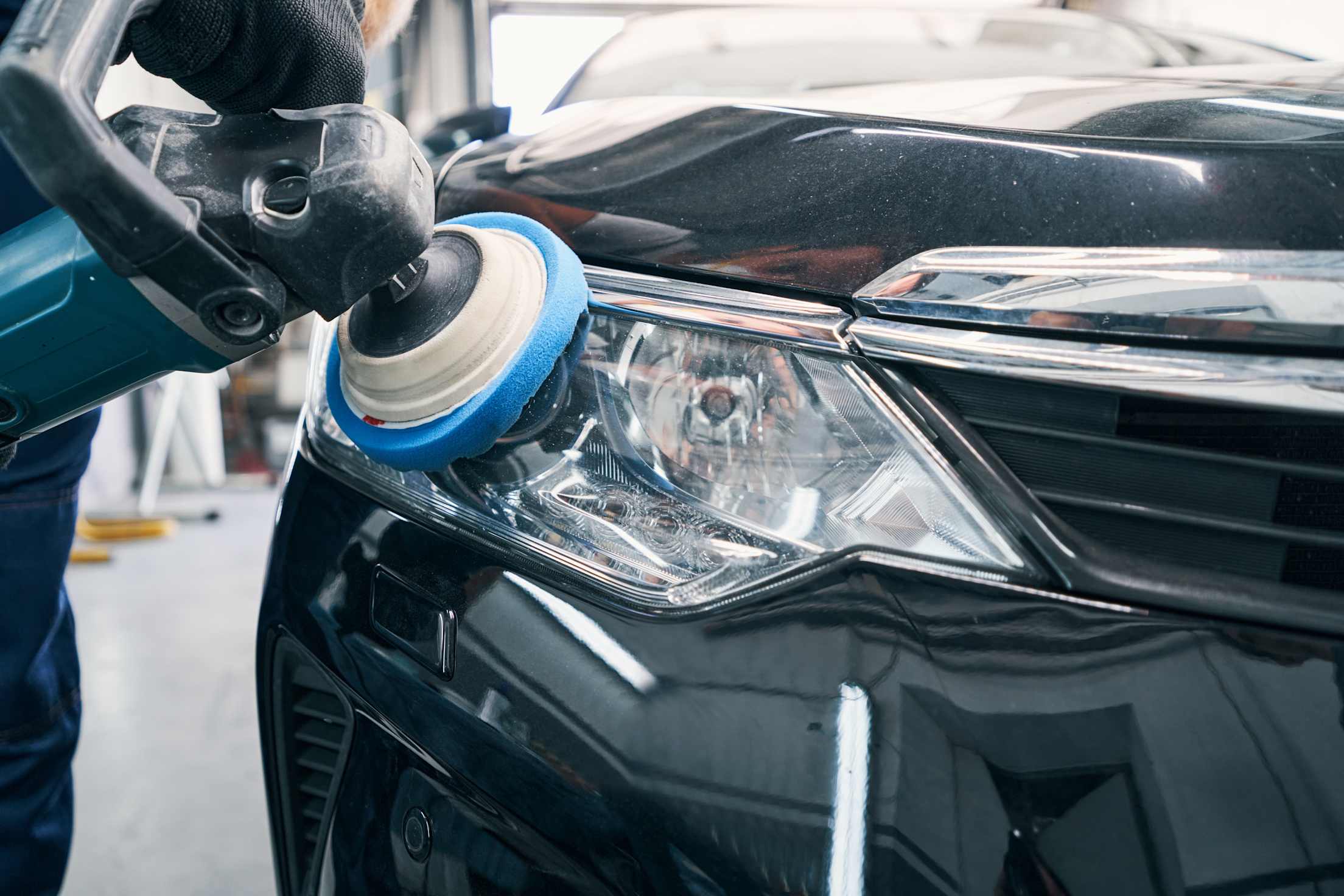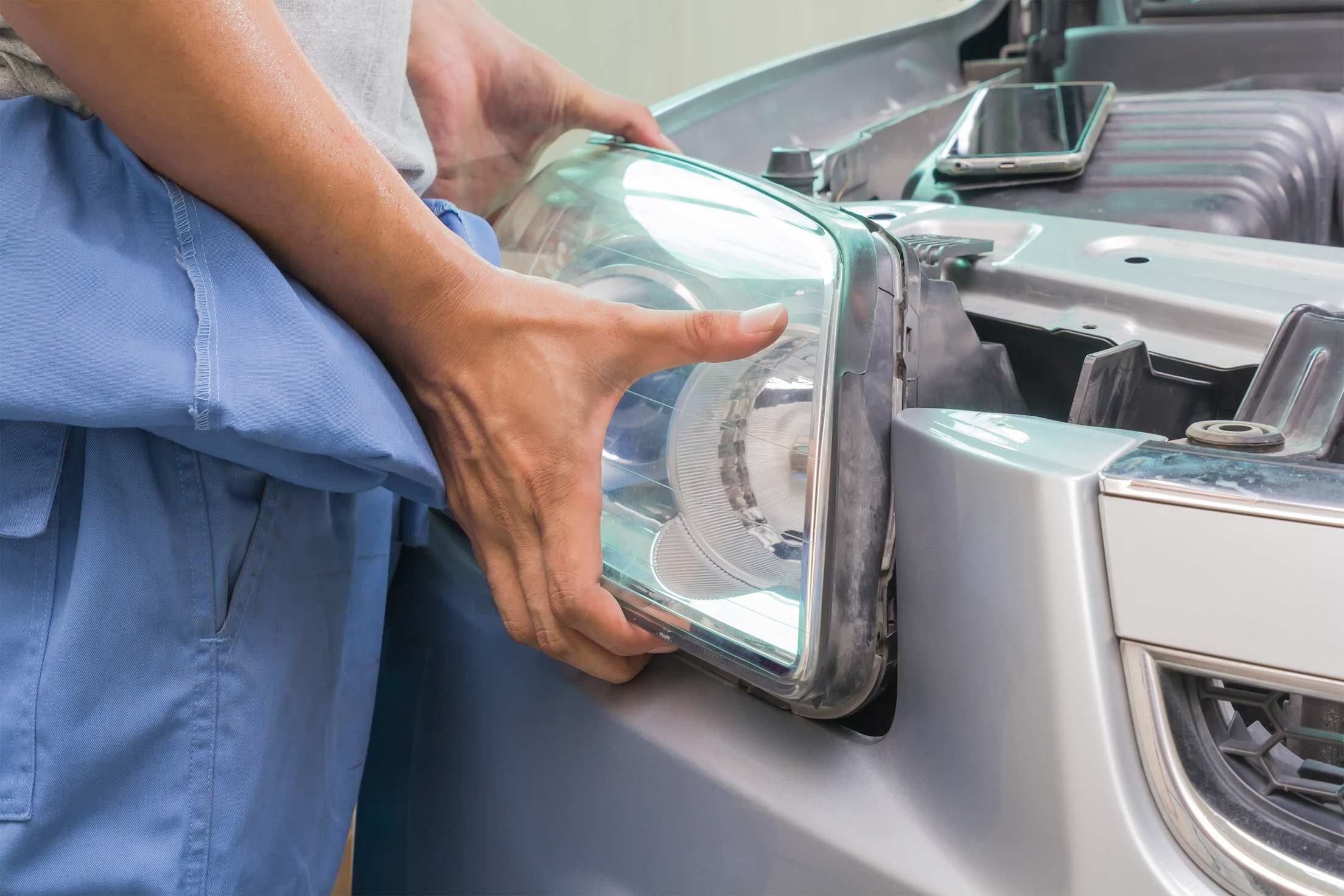
How to Improve the Brightness and Clarity of Your Headlights
Do headlight restoration kits work?

Are your headlights not as bright as they used to be? Yellowing or clouding may be the culprit.
A brand new headlight can yellow or cloud in as little as three to five years. As you drive your car and park it outside, sunlight breaks down headlights’ plastic coating, causing yellowing or clouding.
“The headlights on vehicles in the U.S. are barely capable of providing proper lighting on unlit roads at speeds above 45 miles per hour,” says Greg Brannon, director of AAA Automotive Engineering. “Any deterioration in the lenses reduces this already poor visibility and increases glare for oncoming drivers.”
According to research from AAA, headlights that are yellow or clouded will only produce 22 percent of the light that they generated when they were new. If your headlights don’t provide enough lighting in the dark, you may be at a higher risk of getting into a crash due to reduced visibility.
As you prepare for winter months and less daylight, it's important to inspect your headlights to ensure they are in tip-top shape. If you find yellowing or clouding, you can take steps to restore your headlights.

How to Improve Brightness and Clarity
There are three ways you can improve the brightness and clarity of your headlights.
DIY Headlight Restoration Kit
The least expensive option is a DIY headlight restoration kit. While relatively easy to do, this method will last the shortest time before needing to be redone. “Typically, this involves using progressively finer grits of sandpaper to remove the damaged part of the lens materials, then buffing to create a clear surface free of the scratches from sanding,” says Brannon. “The better kits will finish with a UV coating to maximize the time that the restoration will last.”
Professional Headlight Restoration
Alternatively, you can get a professional headlight restoration, which tends to have better results and last longer because a UV protectant is applied and cured during the process. Professional headlight restorations cost more, but you might be able to add it to a detail you’re already doing for less than a stand-alone service.
While headlight restoration is ultimately better than leaving your headlights cloudy or yellow, both professional and DIY restorations only get the headlight output to approximately 70 percent of the light generated by a brand new lens. Additionally, AAA research found that after headlight restoration, the glare exceeds what is acceptable according to Department of Transportation criteria.

Replacing Headlight Assembly
A complete replacement is the only way to fully restore output. Original manufacturer parts can restore light output back to 100 percent, while less expensive aftermarket parts also performed well in AAA tests, restoring between 83 and 90 percent of light.
While it would be ideal to replace your headlights entirely once they have yellowed or clouded, many car owners may find this option out of reach financially, particularly for cars where headlight assemblies cost $1,000 or more. But in some cases, it’s unavoidable. “Replacement is necessary when the lens is severely deteriorated and restoration leaves a rough or clouded surface,” says Brannon. “In addition, if restoration has been performed multiple times, it is probably time to replace the lens, as the material is simply breaking down from age and UV exposure from sunlight.”
How to Prevent Your Headlight From Yellowing
While there is nothing that can permanently stop your headlights from yellowing or clouding, Brannon recommends applying wax to the headlights when you wax your vehicle, around 2 to 4 times a year. “This will help provide some UV protection and help slow the aging process, just like humans wearing sunscreen,” he says. You can also park your car in the garage to further protect them from harsh conditions.